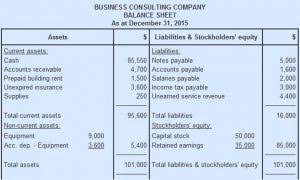The former president, Merchan said in his order, has a history of making “threatening, inflammatory, denigrating” statements against people at all levels of the justice system, including jurors. The order does not prevent Trump from talking about New York https://www.business-accounting.net/ District Attorney Alvin Bragg, who is a public figure, or Merchan himself. History of the Journal Nature has specially commissioned essays and videos, and timelines and an interactive forum, bringing to life the science published in Nature since 1869.
AccountingTools
The journal entry may also include a reference number, such as a check number, along with a brief description of the transaction. Since then, Trump has been fined for violating the order 10 times and the judge warned on May 6 that “this court will have to consider a jail sanction” if the former president violates it again. A week prior, the judge fined Trump $9,000 for nine previous violations of the judge’s gag order. Violations of the gag order are punishable by a fine of up to $1,000, by jail time of up to 30 days, or both. His defense attorneys will be first to present their closing arguments as his historic criminal trial winds down. Trump’s attorney Todd Blanche will present first, followed by Prosecutor Joshua Steinglass in a presentation of summations which is expected to last all day, according to people familiar with the matter.
Facebook company files leak
A general journal is the primary journal in which lower-volume accounting transactions are recorded, while the general ledger contains a summary of every recorded transaction. The general journal was more visible in the days of manual record keeping. With nearly everyone now using accounting software to record their accounting transactions, it is not so readily apparent.
You picked up some office supplies
Former President Donald Trump has arrived at the Manhattan courthouse to attend his criminal hush money trial. Some journals are born digital, such as the Electronic Journal of Combinatorics, in that they are solely published on the web and in a digital format. Most electronic journals originated as print journals, which subsequently evolved to have an electronic version, while still maintaining a print component, while others eventually become electronic-only. Launched as a quarterly in 2008, the magazine grew to 12 issues a year for 2014.[76] The magazine is inserted into the weekend U.S. edition of The Wall Street Journal and is available on WSJ.com and in the newspaper’s iPad app. If you’re totally new to double-entry accounting and you don’t know the difference between debits and credits, you can pause here and check out our visual guide to debits and credits. It’ll teach you everything you need to know before continuing with this article.
Trump is fuming that prosecutors will get the final word to the jury
Think of the double-entry bookkeeping method as a GPS showing you both your origin and your destination. It will show you where the money is coming from and where it’s going to. The gag order was imposed after Trump repeatedly attacked the district attorney’s case and those involved with it ahead of what would be the first criminal trial of a former president. Trump criticized Merchan, his daughter and one of Bragg’s prosecutors in the hours before Merchan issued his order in March. Judge Juan Merchan previously said he expects to give the jury instructions on Wednesday which should take about an hour.
Advertising & partnerships
There could be more specialty journals, but the four accounting areas represented by these journals contain the bulk of all accounting transactions, so there is usually no need for additional journals. Instead, by default, all remaining transactions are recorded in the general journal. Once entered, the general journal provides a chronological record of all non-specialized entries that would otherwise have been recorded in one of the specialty journals.
When an event occurs that must be recorded, it is called a transaction, and may be recorded in a specialty journal or in the general journal. There are four specialty journals, which are so how businesses raise financial capital named because specific types of routine transactions are recorded in them. These journals are the sales journal, cash receipts journal, purchases journal, and cash disbursements journal.
The paper uses ink dot drawings called hedcuts, introduced in 1979 and originally created by Kevin Sprouls,[32] in addition to photographs, a method of illustration considered a consistent visual signature of the paper. It was the first of several indices of stock and bond prices on the New York Stock Exchange. In 1899, the Journal’s Review & Outlook column, which still runs today, appeared for the first time, initially written by Charles Dow.
- Adjusting entries ensure that expenses and revenue for each accounting period match up—so you get an accurate balance sheet and income statement.
- These journals are the sales journal, cash receipts journal, purchases journal, and cash disbursements journal.
- Like the other Nature titles, Nature has no external editorial board.
- Going through every transaction and making journal entries is a hassle.
The above information is an overview of how journal entries work if you do your bookkeeping manually. But most people today use accounting software to record transactions. When you use accounting software, the above steps still apply, but the accounting software handles the details behind the scenes.
First, to serve scientists through prompt publication of significant advances in any branch of science, and to provide a forum for the reporting and discussion of news and issues concerning science. Second, to ensure that the results of science are rapidly disseminated to the public throughout the world, in a fashion that conveys their significance for knowledge, culture and daily life. Nature’s original mission statement was published for the first time on 11 November 1869. The term academic journal applies to scholarly publications in all fields; this article discusses the aspects common to all academic field journals. Scientific journals and journals of the quantitative social sciences vary in form and function from journals of the humanities and qualitative social sciences; their specific aspects are separately discussed. Staff journalists who led some of the newspaper’s best-known coverage teams have later published books that summarized and extended their reporting.
If you use accounting software or outsource your accounting, your journal entries may not be visible, but they’re being generated in the back end, ensuring your books are accurate and up to date. Former President Donald Trump read excerpts from a story published in the Wall Street Journal (WSJ) to reporters outside the Manhattan courtroom while claiming the hush money trial against him amounted to election interference. In addition, the general journal is used to record all other transactions that are not recorded in these more specialized accounting journals. At the end of the financial year, you close your income and expense journals—also referred to as “closing the books”—by wiping them clean.
While this portion is expected to happen at some point on Wednesday, as with all court-related matters the timing is not set in stone. Defense attorney Todd Blanche will present first Tuesday morning with closing arguments expected to take 2.5 to 3 hours, a person familiar tells CNN. While both sides will ultimately be telling different versions of the same story to the jury today, they have one concern in common.









